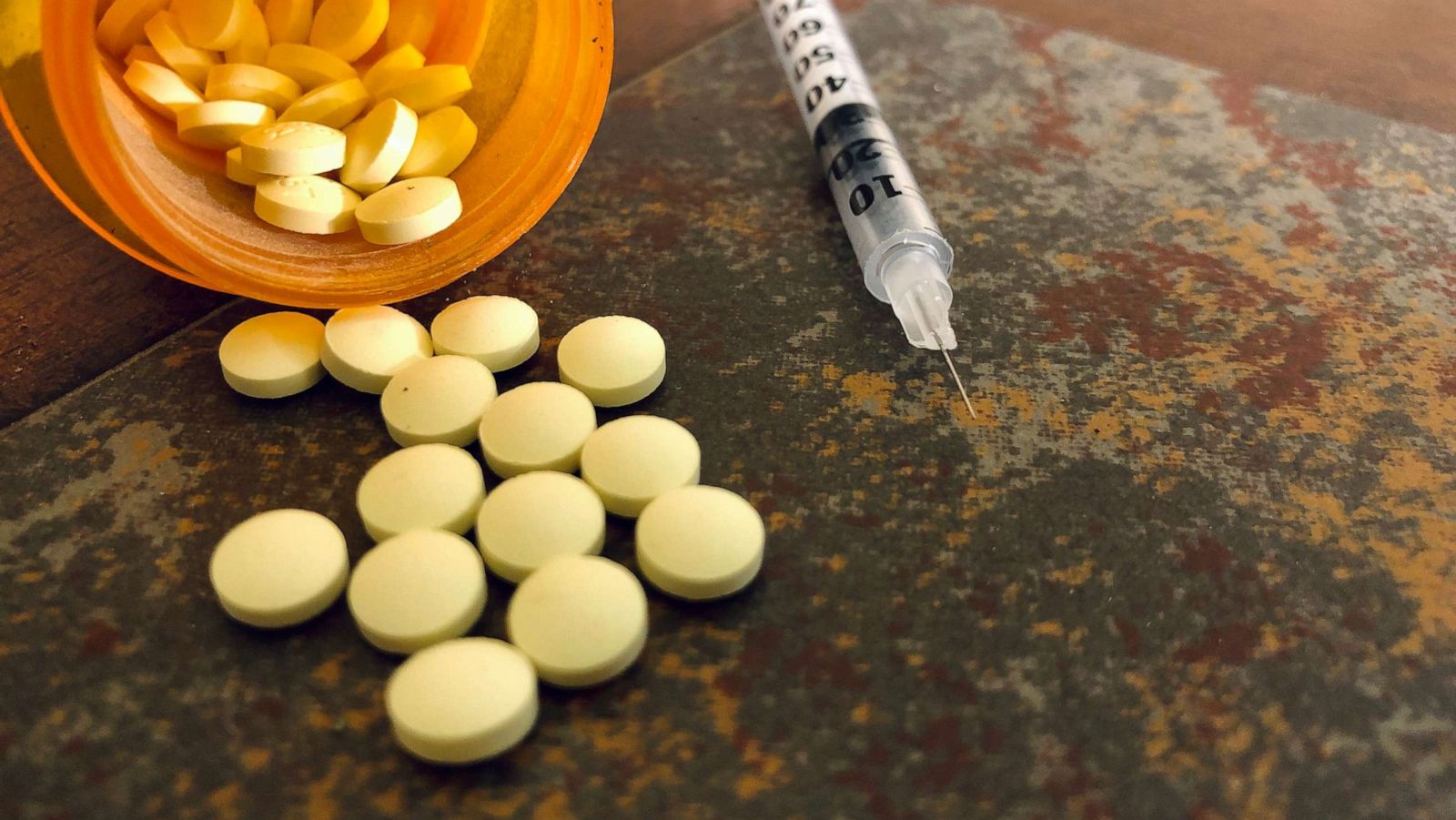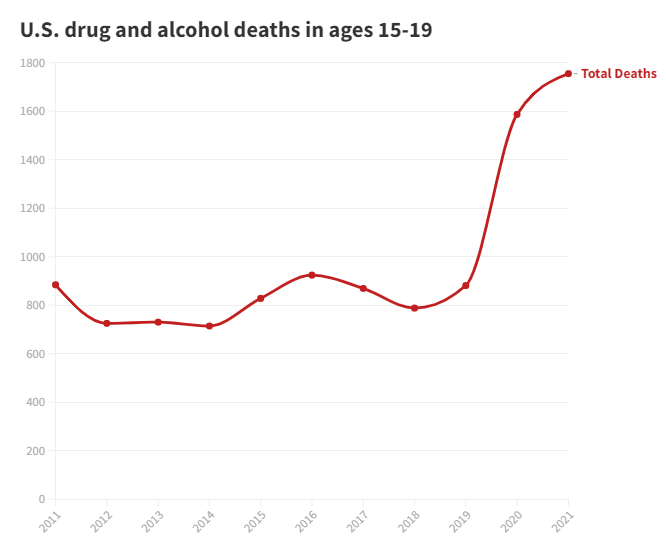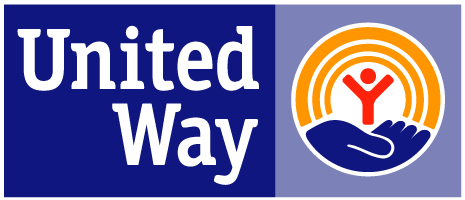Teen overdose deaths have doubled in three years. Blame fentanyl
Teen overdose deaths have doubled in three years, an alarming trend amid a historic decline in drug and alcohol use among high school students.
The main reason is fentanyl. Teens consume the powerful opioid unwittingly, packaged in counterfeit pills tailored to resemble less potent prescription medications. Drug traffickers combine pills with fentanyl to boost the black-market high. Dangerously addictive, fentanyl can be lethal, especially to youth experimenting with drugs.
“Fentanyl, it’s just a different beast,” said Dr. Hoover Adger Jr., professor of pediatrics at the Johns Hopkins University School of Medicine. “And it’s so deadly. Fentanyl is 50 times stronger than heroin and 100 times stronger than morphine.
Many sources point to fentanyl as the leading cause of teen overdose death. Between 2010 and 2021, the number of adolescent deaths from black-market fentanyl and related synthetics rose more than twenty-fold, from 38 to 884, according to a 2022 study in the Journal of the American Medical Association.
The second leading cause of adolescent overdose death, the class of depressants known as benzodiazepines, claimed 152 lives in 2021, less than one-fifth of fentanyl’s toll.
“If you magically removed fentanyl from the drug supply, these deaths would absolutely plummet,” said Dr. Michael Toce, pediatrician at Harvard Medical School.
Fentanyl, a synthetic opioid, has proliferated on the underground market of counterfeit pills for the past several years. Inexpensive, easily manufactured and powerfully addictive, fentanyl has emerged as the narcotic of choice for drug traffickers and dealers.
“If you are buying an illicit opioid right now on the open market,” Toce said, “it should be presumed that it will contain fentanyl.”
Because of its potency, fentanyl can trigger a fatal overdose in much smaller quantities than less potent drugs. Largely because of fentanyl, the number of U.S. drug overdose deaths doubled in six years, from 52,404 in 2015 to 106,699 in 2021.
Adolescents are well-versed on the opioid epidemic and well-aware of the danger of opioid addiction, addiction experts say. Most teens don’t want to abuse opioids and have little access to prescription medications such as oxycodone.
The problem with black-market fentanyl is that, in many cases, teenage customers don’t know they are buying it.
“Fentanyl has crept into so many things,” Adger said. “I have patients who think they’re taking marijuana, but its marijuana laced with fentanyl. I have patients who think they’re taking medicine. It’s in pill form, they’re pressed, they look just like regulated medications. Kids think what they’re getting is safe.”
The fentanyl deaths mirror a larger crisis in child mortality that has startled the public health community.
Death rates among youth rose by nearly 20 percent between 2019 and 2021, reversing a decades-long trend of declining mortality among the young, according to a recent paper in the Journal of the American Medical Association.
Child mortality is rising at a rate not seen in at least half a century, an era that had seen steady progress in preventing deaths from automobile accidents, firearms and disease. The study’s authors ascribed the increase to “manmade pathogens,” especially guns and drugs.
More teens are dying of drug overdoses at a time when, paradoxically, teen drug and alcohol use is in decline.
Between 2002 and 2022, the share of 12th-grade students who used illicit drugs dropped from 21 percent to 8 percent, according to the national Monitoring the Future study. The figure excludes marijuana, a prevalent drug among teens. But marijuana use is declining, too.
The share of 12th-grade students drinking alcohol dwindled from 72 percent in 2002 to 52 percent in 2022. The cigarette-smoking population plummeted from 57 percent in 2002 to 17 percent in 2022.
Researchers credit the national anti-smoking campaign with tamping down teen drug use. The “Truth” initiative, launched in 1998, seeded a dramatic decline in teen smoking. Drug use declined apace.
“If you ask me, it’s one of the biggest health successes of the century,” said Richard Miech, a University of Michigan sociologist who works on Monitoring the Future. “Once you start smoking, you’re more likely to move on to other drugs.”
The successful anti-drug campaign extends to prescription opioids. Miech says their use among teens has fallen “about fivefold” in the past decade.
Teens have much less access to prescription opioids today than 10 or 20 years ago, thanks to a national push to limit the number of pills prescribed and to secure the tablets in blister packs, a method of storage that makes it easier for a parent to notice if one is missing.
Only 66 adolescents died of prescription opioid overdose in 2021, fewer than half the number who died in 2010, according to the 2022 Journal of the American Medical Association report.
The dramatic rise in overdose deaths in an era of declining drug use illustrates the lethal potency of fentanyl, addiction experts say.
“The number of kids who are experimenting with illicit opioids is going down,” Toce said. “But it’s such a high risk that even though fewer people are doing it, more people are dying.”
Fentanyl is far more dangerous to thrill-seeking adolescents than to habitual adult users. One reason is that teens are generally smaller and weigh less. Another is that the typical teen who experiments with counterfeit pills is not a chronic user. Adults with opioid dependency can tolerate much higher amounts of fentanyl than a high school student dabbling in pills.
Teens often buy counterfeit pills online, through social media channels. They might think they are getting Adderall, a prescription stimulant that treats ADHD, or Xanax, an anti-anxiety drug, or MDMA, a party drug variously known as ecstasy or molly.
“They aren’t looking for fentanyl,” said Linda Richter, vice president of prevention research and analysis at the nonprofit Partnership to End Addiction.
“These kids aren’t trying to kill themselves. It’s in ecstasy, molly, these party drugs. Stimulants. Depressants. … It’s in all kinds of pills, and most people don’t know it. The traffickers have done a really good job at making it look like the pills the kids want.”
The good news, Richter and others say, is that teens respond well to fact-based messages about emerging perils in the drug market. Teens largely rejected prescription opioids after learning of the overdose risk, just as they had broadly abandoned smoking in response to the “Truth” campaign.
Public health advocates hope the rising toll of overdose deaths will prompt educators and parents to do a better job of alerting teens to the dangers of fentanyl.
“When we start to lose kids,” Adger said, “then parents and people who care about kids start to wake up.”
Peace,
Irwin J. Kash MD
Irwin J. Kash









